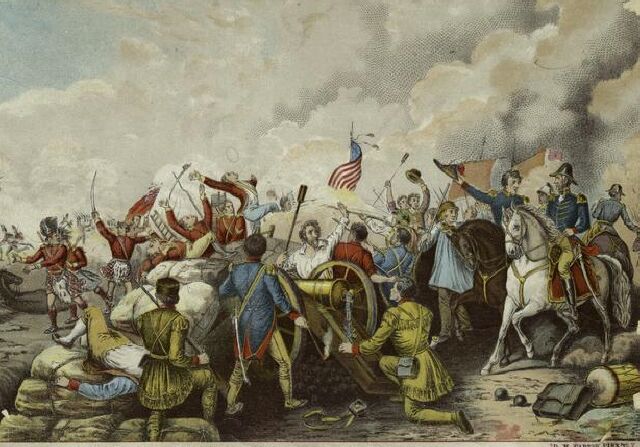
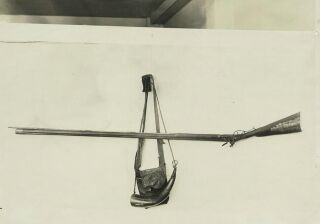
| "Gen. Jackson's Victory at New Orleans" by Dennis Malone Carter |
| Above: Drum used by Americans at the Battle of New Orleans; Above, right: Rifle, pouch and horn used during the battle. |
| The Battle of New Orleans was over just two hours after it had begun. Almost 2,000 British soldiers were killed or died later from their wounds; there were only 13 American casualties. None of these are buried at the Chalmette Cemetery, in fact, only one veteran of the War of 1812 rests there. Some of the fallen American soldiers are buried in St. Louis No.1 Cemetery, where there is a monument to them in the Protestant section of the cemetery. |
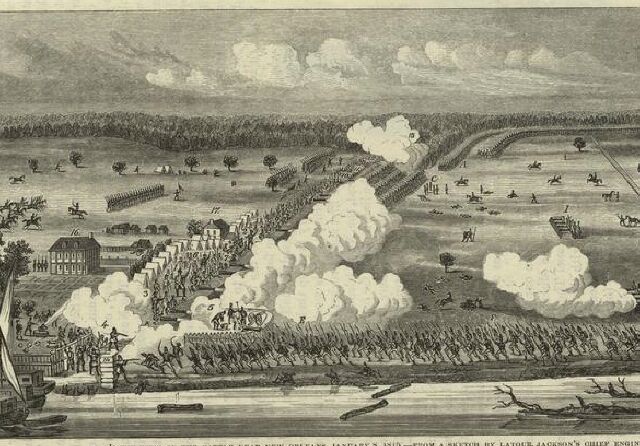
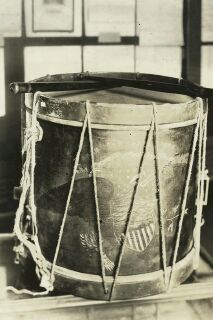
| "To control the Mississippi River was to control 41 per cent of U.S. shipping. If the British would have captured New Orleans, we would have lost the Louisiana Purchase and the west probably would have been Canadian." -- Chalmette Battlefield Park Ranger C. J. Longaneckar |
| Illustrations of the Battle of New Orleans ~ and ~ Vintage Photos of the Chalmette Battlefield/Cemetery |
| The link to this page is: http://old-new-orleans.com/NO_Battle_NewOrleans.html Back to Old New Orleans Whispers - Home |
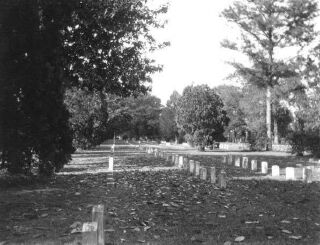
| Postcard at right, ca. 1930, reads: "The remains of over 15,000 veterans and others eligible for burial in a national cemetery have been interred here since this was set aside as a national cemetery in 1864. 'Dum Clacent Clement,' inscribed on this monument is translated to mean, 'Though Silent, Still Let Them be Heard.' The cemetery is within the Chalmette National Historical Park, site of the Battle of New Orleans." |
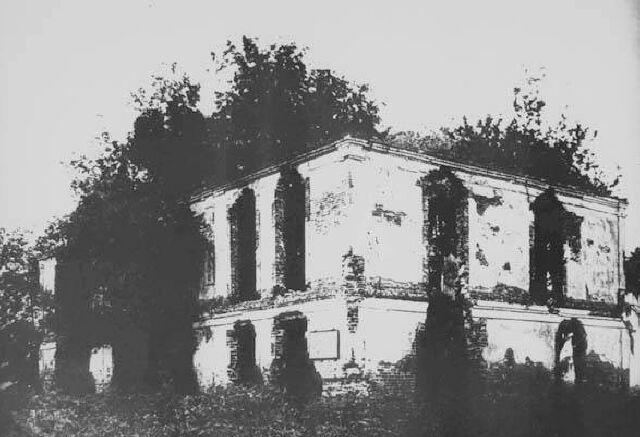
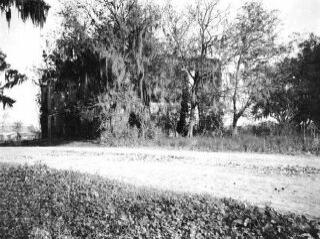
| Remains of de la Ronde house, early 1920's. |
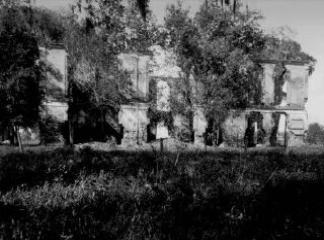
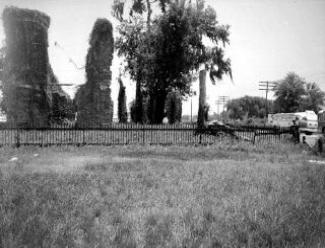
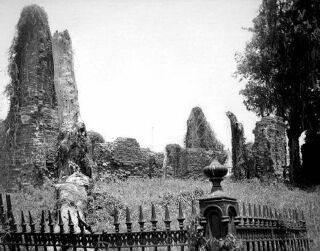
| Remains of de la Ronde house, early 1950's. |
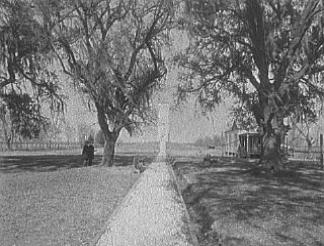
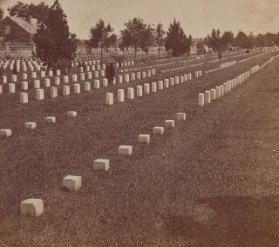
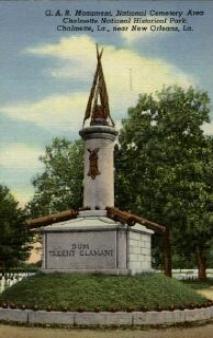
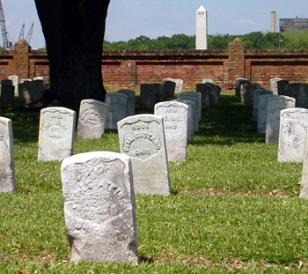
| The veterans buried in Chalmette National Cemetery fought in every major U. S. war from the War of 1812 to the Vietnam War ... nearly half of these are graves of unknown soldiers. |
| "I like to think that when the wind is blowing, the trees tell the stories of the people buried there," Chalmette Battlefield Park Ranger. |
| Jacques Phillippe Villere, portrait on right, was born in St. John the Baptist Parish, LA, in 1761. His father was Naval Secretary of Louisiana under King Louis XV; his grandfather had accompanied Iberville on his voyage to Louisiana. Jacques married Jeanne Henriette de Fazende, of St. Bernard Parish, in 1784. During the Battle of New Orleans, Villere commanded the First Division of Louisiana Militia. Villere's home, Conseil, was overrun by the British and used as an encampment. Jacques Villere was a member of the convention which drafted Louisiana's first constitution. He was elected as the second governor of Louisiana, the first Creole to be elected to that office, serving from 1816 until 1820. After which, he retired to his plantation Conseil. Major-General Villere died in 1830. |
| Many thanks to Anthony Posey for contributing the above sketch of the de la Ronde plantation. The sketch is a part of the Crystal and Anthony Posey Collection. |
Excerpt of order from General Andrew Jackson to Jacques Villere:
Head Quarters New Orleans - General Orders Decr. 19th, 1814
Major General Villere will without delay obstruct the passage from the Lakes Borgne, Pontchartrain and
Maurepas to the Mississippi, and station at every important point a guard...and report regularly to head
quarters every occurence of importance. The Major General is authorized to make such requisitions
upon the inhabitants within his District...as he may deem necessary and enroll and receive into the
service all the Indians within his District and upon their enrollment, will deliver to them one blanket and
two shirts the value thereof to be deducted from their pay.
Andrew Jackson, Major General Commanding
Head Quarters New Orleans - General Orders Decr. 19th, 1814
Major General Villere will without delay obstruct the passage from the Lakes Borgne, Pontchartrain and
Maurepas to the Mississippi, and station at every important point a guard...and report regularly to head
quarters every occurence of importance. The Major General is authorized to make such requisitions
upon the inhabitants within his District...as he may deem necessary and enroll and receive into the
service all the Indians within his District and upon their enrollment, will deliver to them one blanket and
two shirts the value thereof to be deducted from their pay.
Andrew Jackson, Major General Commanding
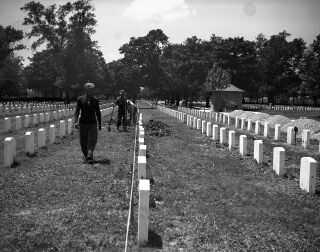
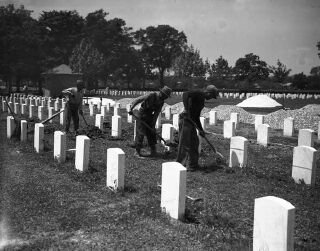
| WPA workers, tombstone alignment project at Chalmette National Cemetery, 1937. |
| "Battle of New Orleans, January 8, 1815" by Latour |
| The de la Ronde plantation, constructed in 1805 - Maj. Gen. Sir Edward Pakenham, leader of the British forces, died here from wounds received in the battle. The date of this photo is unknown, but it was taken by New Orleans photographer, George Francois Mugnier, which narrows the time period; because of that and the stages of deterioration of the house in the photos below, I'd guess that the one above was proabably taken in the 1890's. |
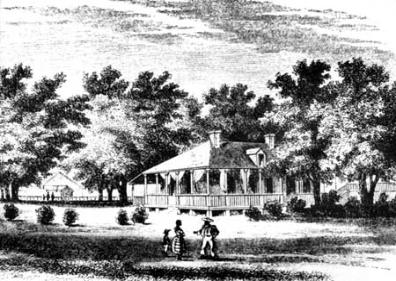
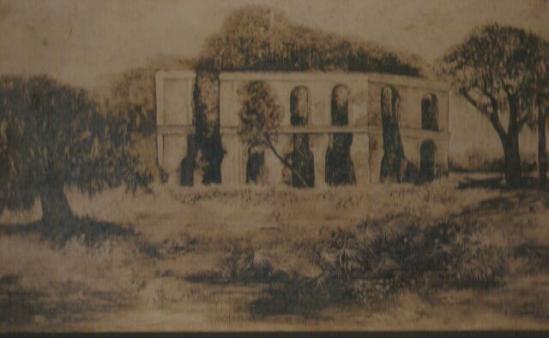
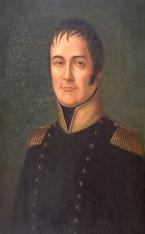
| On the right, Conseil, the Villere Plantation, where the British encamped and where an abortive attack by Gen. Jackson took place on December 23, 1814. After severe fighting, the Americans withdrew. This battle is referred to as the "Battle of Villere's Plantation" or the "Night Battle of New Orleans." |